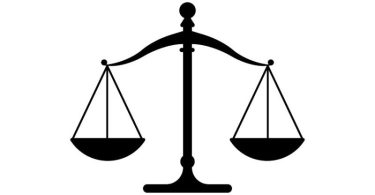MAC (Media Access Control) and IP (Internet Protocol) addresses are essential identifiers used in networking. Still, they serve distinct purposes and operate on different layers of the Internet protocol suite. MAC addresses are physical hardware identifiers unique to each network interface card (NIC) of a network-capable device, such as a computer, router, or other network-capable device. It is typically assigned by the manufacturer, etched into the device’s hardware, and operates at the OSI data link layer (Layer 2). MAC addresses are used in local networks for direct device-to-device communication.
In contrast, IP addresses are logical addresses assigned to devices when they join a network. At the network layer (Layer 3) of the OSI model, they can vary dependent on the network to which a device connects and are used to route data across the Internet and more extensive networks. An IP address functions similarly to a street address, ensuring that data packets are delivered to the correct device. MAC addresses are permanent, hardware-based identifiers used for local communication, whereas IP addresses are dynamic, network-assigned identifiers used for data routing across more extensive networks.
What is MAC Address?
A MAC (Media Access Control) address is a globally unique identifier given to a network interface controller (NIC) to be used as a network address when communicating within a network section. It is used by Ethernet, Wi-Fi, and other IEEE 802 network technologies. It is a unique serial number for each network interface. A MAC address is a 48-bit or 64-bit number, generally written as a string of twelve hexadecimal digits. This is usually broken up by colons or hyphens into pairs to make it easier to read, like 1A:2B:3C:4D:5E:6F.
The ID number of the adapter maker is in the first half of a MAC address. An Internet standards group sets the rules for these IDs. The second part of a MAC address is the unique number the company that made the adapter gave it. MAC addresses can’t be changed like IP addresses can because they are built into the NIC and can’t be changed. This makes them useful for identifying particular devices, even if the IP address of the device changes. But it’s important to note that even though MAC addresses are formally permanent, they can sometimes be faked or hidden with software.
What is IP Address?
An Internet Protocol (IP) address is a number given to every device on a computer network that uses the Internet Protocol to communicate. The primary purpose of these addresses is to identify the host or network interface and to tell where the host is in the network. IP addresses are a vital part of what makes the internet work. They work like phone numbers in that they give each computer its own unique set of numbers that can be used to send and receive data.
Currently, there are two types of IP addresses: IPv4 and IPv6. IPv4 addresses are written as four sets of numbers from 0 to 255, split by periods (for example, 192.168.1.1). IPv6 was made because IPv4 addresses were expected to run out. It uses a mix of alphanumeric and numeric characters separated by colons. For example, 2001:0db8:85a3:0000:0000:8a2e:0370:7334 is an IPv6 address. An IP address can be static or dynamic, meaning it stays the same over time or changes every time a device connects to the network. The Internet Service Provider (ISP) gives it an IP address when something links to the Internet.
Difference Between MAC Address and IP Address
Two types of addresses are used in networking: media access control (MAC) addresses and internet protocol (IP) addresses. There are, however, a few key differences. A network interface card’s (NIC) MAC address is a physically distinct identification used for local area network (LAN) communication and is provided by the NIC’s manufacturer. Layer 2 of the OSI reference model is where its functions are implemented. When a device connects to a network, it receives an IP address, a logical identifier for routing data over the Internet and other networks. Layer 3 functionality allows for adaptation to the specifics of the network to which a certain device is attached. We’ve compared MAC addresses with IP addresses and highlighted the key distinctions below.
Assignment
Unlike IP addresses, which a network or an ISP often provides, MAC addresses are typically assigned by the device manufacturer.
Changeability
Unlike IP addresses, which can vary whenever a device connects to a new network, MAC addresses are permanently hard-coded into the hardware of an item.
Layer of Operation
While IP addresses function at the OSI model’s network layer (Layer 3), MAC addresses are only used at the data link layer (Layer 2).
Uniqueness
Although IP addresses can be reused between networks, media access control (MAC) addresses are always considered one-of-a-kind.
Notation and Length
IP addresses can be either 32 bits (IPv4) or 128 bits (IPv6) and are separated into four groups (for IPv4) or eight groups (for IPv6), while MAC addresses are 48-bit hexadecimal values, often divided into six groups.
Scope
In contrast to IP addresses, which route data across networks, MAC addresses are only used for local network communication.
Function
In contrast to IP addresses, which identify a device’s location on a network, MAC addresses identify the device itself.
Privacy and Security
IP addresses can be dynamic and masked, making them more private than MAC addresses, which can be traced back to a specific piece of hardware. Both, however, are vulnerable to spoofing attacks.






